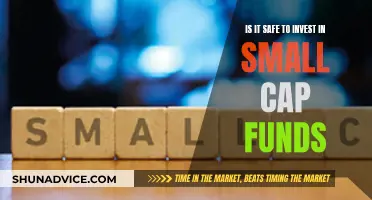
Financial expert, author and radio host Dave Ramsey has a lot of advice when it comes to investing your 401(k). Before you start investing, Ramsey says you should get out of debt and save up a fully funded emergency fund first. Once you've done that, he recommends investing 15% of your income in tax-advantaged retirement accounts, such as a 401(k) or a Roth IRA. When it comes to choosing your investments, Ramsey suggests investing in good growth stock mutual funds, and working with a financial advisor to help you pick and choose what mutual funds to include in your retirement portfolio.
| Characteristics | Values |
|---|---|
| How much to invest | 15% of your income |
| Type of account | Tax-advantaged retirement accounts |
| Types of funds to invest in | Good growth stock mutual funds |
| Investment strategy | Long-term perspective and consistent investing |
| Working with an advisor | Recommended |
| Getting out of debt | Priority before investing |
| Emergency fund | Priority before investing |
| Tax advantages | Pretax or after-tax investment accounts |
| Employer match | Take full advantage |
| Types of mutual funds | Growth and income, growth, aggressive growth, and international |
| Mutual fund characteristics | Long track record, strong returns, outperforming the market |
| Financial advisor | Helpful for choosing investments and staying engaged with strategy |
What You'll Learn

Invest in mutual funds
Dave Ramsey's investing philosophy is centred around five key principles. The third of these is to "invest in good growth stock mutual funds".
Mutual funds are the most common type of investment choice offered by 401(k) plans, and for good reason. They are professionally managed investments that allow investors to pool their money together to invest in dozens, sometimes hundreds of companies at once. With mutual funds, you don't have the same amount of risk that comes with single stocks. Instead, you're spreading your investments across many different companies with built-in diversification.
According to Ramsey Solutions, mutual funds are the only investment option they recommend because they spread your investment across many companies, helping you to avoid the risks that come with investing in single stocks and other "trendy" investments.
Ramsey Solutions recommends dividing your mutual fund investments equally between four types of funds: growth and income, growth, aggressive growth, and international. This lowers your investment risk because now you're invested in hundreds of different companies all over the world, in a whole bunch of different industries. In other words, you're not putting all your eggs in one basket.
Here's a closer look at those four types of funds:
- Growth and income funds: You may hear these referred to as large value or large-cap. They're usually large, well-established American companies with household names that offer goods or services that we all use, regardless of how the economy is doing. Because they're pretty predictable in terms of performance, these funds will create a stable foundation for your portfolio.
- Growth funds: To add some variety to your portfolio, allocate 25% of your investments to growth funds. These are companies whose records aren't quite as predictable as those in the growth and income funds category. They go up and down with the market but show steady growth over time. Growth funds are also called mid-cap or equity funds.
- Aggressive growth funds: If growth and income funds are on the predictable and stable side, aggressive growth funds are having a party on the opposite side. These funds often invest in smaller, newer companies (like start-ups or small businesses), so there's a little more risk involved, but the payoff could be bigger too.
- International funds: Also called foreign or overseas funds, international funds are great because they allow you to invest in non-US companies. Secondly, they help spread out risk and diversify your portfolio.
When looking for mutual funds to invest in, keep an eye out for funds with a long track record (at least 10 years) of strong returns that consistently outperform the S&P 500.
Mutual Fund Investment: What You Need to Know
You may want to see also

Tax-advantaged retirement accounts
Dave Ramsey's investing philosophy is centred around the idea of "Baby Steps Millionaires", which involves getting out of debt, saving for emergencies, and building wealth over time. According to Ramsey, there are five key investing principles to follow:
- Get out of debt and save for emergencies: Before investing, it's important to build a solid financial foundation by eliminating debt and creating an emergency fund of 3-6 months' worth of expenses. This ensures that you're not tying up your income in debt payments and provides a safety net to prevent tapping into retirement investments during emergencies.
- Invest 15% of your income in tax-advantaged retirement accounts: Utilise tax-advantaged investment accounts, such as pretax investment accounts (offering tax breaks on contributions) and after-tax investment accounts (allowing tax-free growth and withdrawals). The formula to follow is: match > Roth > Traditional.
- Invest in good growth stock mutual funds: Mutual funds allow you to invest in a diverse range of companies, reducing the risks associated with investing in single stocks. Ramsey recommends dividing your mutual fund investments between four types of funds: growth and income, growth, aggressive growth, and international.
- Keep a long-term perspective and invest consistently: Maintain a buy-and-hold strategy, focusing on long-term growth rather than chasing short-term returns. Consistency in investing is key, and saving rates are more important than returns in building wealth over time.
- Work with a financial advisor: Collaborate with a financial advisor who can provide insights and direction based on their experience. Choose an advisor who takes the time to answer your questions and helps you make informed investing choices.
Now, let's focus on tax-advantaged retirement accounts.
When it comes to tax-advantaged retirement accounts, Dave Ramsey recommends the following:
- Pretax Investment Accounts: These accounts provide a tax break on your contributions now, but you'll pay taxes on withdrawals in retirement. An example is the Thrift Savings Plan (TSP).
- After-Tax Investment Accounts: Also known as Roth accounts, these allow you to make contributions with after-tax dollars. As a result, you can enjoy tax-free growth and withdrawals in retirement. Examples include Roth 401(k) and Roth IRA.
- Workplace 401(k) Plans: Your employer may offer a 401(k) plan with matching contributions, providing an instant 100% return on your investment. This is essentially "free money". However, keep in mind that tax-deferred growth in a traditional 401(k) means you'll owe taxes on withdrawals in retirement unless you have a Roth 401(k).
- Roth IRA: If you want to invest beyond your 401(k), Ramsey suggests considering a Roth IRA. It offers tax-free growth and withdrawals, which can be advantageous if tax rates increase in the future. Additionally, you have the flexibility to choose from thousands of mutual funds for more diverse investment options.
When deciding how to allocate your investments between these accounts, Ramsey provides the following guidelines:
- If your employer matches contributions to your 401(k), invest up to the match first.
- Take advantage of all the Roth options available to you, whether through your workplace 401(k) or an individual Roth IRA.
- If you still haven't reached the recommended 15% contribution goal, continue contributing to your traditional 401(k) until you hit that target.
- If you've maxed out your Roth IRA and still have more to invest, go back to your 401(k) to take advantage of its tax benefits.
A Guide to Investing in KCB Money Market Fund
You may want to see also

Growth and income funds
The goal of a growth and income fund is to create a diversified portfolio that takes advantage of the capital gains potential of the growth segment and the dividend income and stability of the value segment. As such, they are a good choice for investors who want to avoid excessive risk. While returns may lag behind pure growth funds, sometimes high-yielding stocks become favoured in the market, leading to superior performance for growth and income funds.
When it comes to retirement, financial advisors recommend that retirees replace 75% of their working wages with income-producing securities. Growth and income funds can help fulfil this objective as they provide both income and a potential rate of appreciation to combat rising prices of goods and services. This ensures that retirees do not outlive their retirement savings.
Overall, growth and income funds are a good choice for investors who want a stable foundation for their portfolio and are willing to accept moderate returns in exchange for lower risk.
HDFC Capital Builder Fund: Worth Your Investment?
You may want to see also

Roth 401(k)s
A Roth 401(k) is a type of employer-sponsored retirement savings plan. It is funded using after-tax dollars, meaning that income tax is paid immediately on the earnings that the employee deducts from each paycheck and deposits into the account. As long as certain conditions are met—that is, you must be at least 59½ years old, and you must have had the account for at least five years—withdrawals from the account are tax-free upon retirement.
The Roth 401(k) is different from a traditional 401(k) plan, which is funded with pretax money. In this case, payroll deductions come out of the employee’s gross income, and taxes are due when the money is withdrawn from the account.
The main advantage of a Roth 401(k) is that, while contributions are taxed, earnings and withdrawals made during retirement are tax-free. This can be particularly beneficial for employees who are currently in a low tax bracket but expect to move into a higher one after they retire.
Another benefit of a Roth 401(k) is that there is no income limit to participate. In 2024, the contribution limit for individuals is $23,000, and individuals aged 50 or older can contribute an additional $7,500 as a catch-up contribution.
However, one downside of a Roth 401(k) is that it may result in a more immediate financial burden for employees. Because contributions are taxed, they can reduce an employee's take-home pay more than contributions to a traditional 401(k).
When deciding whether to invest in a Roth 401(k) or a traditional 401(k), it's important to consider your current tax rate and your expected tax rate in retirement. If your tax rate is low now and you expect it to be higher in retirement, a Roth 401(k) may be a good option. On the other hand, if your tax rate is higher now than you expect it to be in retirement, a traditional 401(k) may make more sense.
Invest Wisely: HDFC Top 100 Fund Guide
You may want to see also

Work with a financial advisor
Working with a financial advisor is the fifth and final principle of Ramsey Solutions' investing philosophy. No matter where you are on your financial journey, it can be beneficial to team up with a financial advisor. Their most valuable role is to help you meet your retirement goals.
A good financial advisor should give insight and direction based on their years of experience. At the same time, they should understand that you are the decision-maker. Look for a pro who takes the time to answer your questions and gives you all the information you need to make good investing choices. You should leave a meeting with your financial advisor feeling smarter and more empowered than when you went in.
A financial advisor can help you manage your investments in two ways. First, they can help you pick and choose what mutual funds to include in your retirement portfolio. Be clear about your goals upfront so that you and your advisor are on the same page before making any decisions. Second, they can help you stay engaged with your investment strategy. It's a good idea to set up regular meetings or phone calls with your financial advisor to see how your mutual funds are performing and whether any changes need to be made to your portfolio.
If you're feeling overwhelmed by all the details of investing, a SmartVestor Pro can help you make investment choices for your future. A financial advisor can also help you navigate market chaos, inflation, and your financial future.
Invest HSA Funds: TD Ameritrade Guide
You may want to see also
Frequently asked questions
Dave Ramsey notes that 8 out of 10 millionaires have said their 401(k) was their main wealth-building tool. If your employer matches your contributions, you get an instant 100% return on part of the money you invest in your 401(k). You also benefit from tax-deferred growth and lower taxable income.
Dave Ramsey cautions that your 401(k) money is designed to stay put until you're 59 1/2. If you prioritise investing over other financial needs, you may be left with less cash for other essential expenses.
Dave Ramsey advises that you should only max out your 401(k) when you have extra cash in your budget, no debt payments, and your mortgage paid off. You should also consider maxing out your 401(k) if you have a high income or are behind on saving for retirement.







